| |
|
|
|
|
|
|
|
|
|
|
| |
| |
 |
|
| |
田润德
编译文/图 2020-04-03 19:36 |
|
| |
|
|
|
|
| |
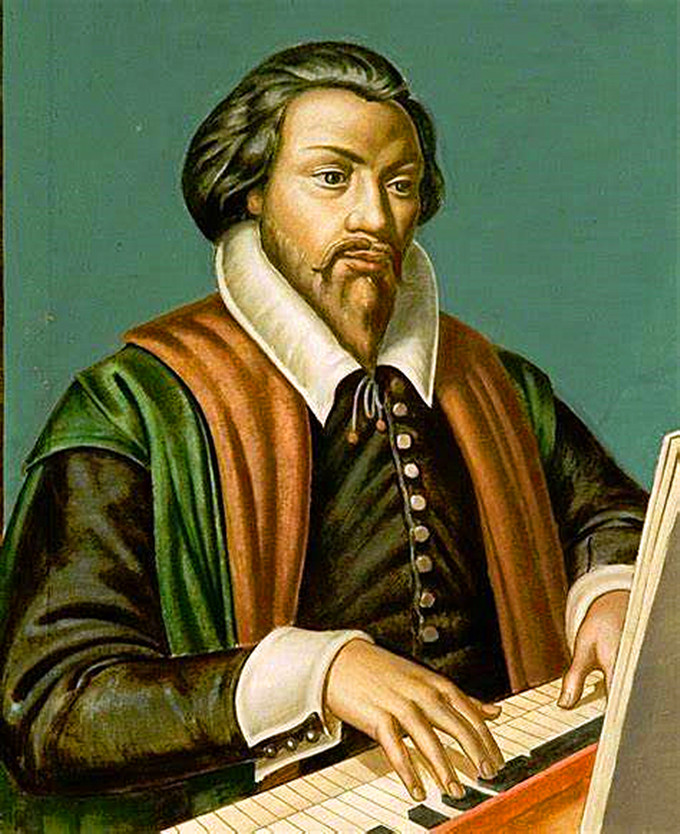 |
|
|
|
| |
威廉·拜尔德(William Byrd,1543-1623) |
|
|
|
| |
|
|
|
|
| |
莎士比亚所听到的音乐威廉·伯德的《马车夫的口哨》
music Shakespeare heard׃ The Carmans Whistle by William Byrd [SD 360p]
|
|
|
|
| |
|
|
|
|
| |
音乐历史上的今天
1607年4月3日,“人们说,天鹅在临死前歌声更加甜美。”威廉·拜尔德在《升阶曲集》(Gradualia)中写道。
威廉·拜尔德(William
Byrd,1543-1623)是文艺复兴时代的一座颠峰,他写作涉及的体裁在当时的音乐家里是最广的一个。从无伴奏复调合唱的弥撒曲,经文歌,牧歌到鲁特琴伴奏的英文歌曲(song),以及纯器乐的舞曲,鲁特琴曲,为管风琴和大键琴作的键盘作品,无所不能。
十六世纪后半叶,英国进入艺术的全盛时期,莎士比亚(1564-1616)正是生活在这一时期。此时,英国音乐也进入了最辉煌的时代,呈现出多姿多彩的景象,宗教音乐与世俗音乐分庭抗衡,并更深入地相互融合。威廉·拜尔德是这一时期英国最杰出的作曲家,他出生于1543年的英国的林肯夏郡,管风琴与作曲师从于霍默斯·泰利斯(Homas
Tallis, 1505-1585),也从泰利斯那学到意大利牧歌的创作形式。他的第一个正式工作是担任林肯教堂的管风琴手,也负责为礼拜谱写音乐。之后他在泰利斯的引介下,于1572
年移居伦敦,与泰利斯一起担任皇家教堂的音乐监督。两人成功的合作模式,让他,们在三年后得到维多利亚女皇的许可,特准可在
21
年间在英国独家进口与印行音乐。而这也造就他们第一册音乐集《献给女皇的三十四首圣咏》的出版。虽然有如上的商业成功,拜尔德并不想长住伦敦。在严苛的英国国教气氛中,他仍然保有天主教信仰;不但为其礼拜作曲,也与其他天主教徒有所往还。虽然他对英国国教的「政治忠诚」从无人质疑,但他并不愿涉足太多政治纷争。因此六年後他离开伦敦,在乡间居住。
1588 与 1589 年间,拜尔德的师友泰利斯与妻子相继逝世。或许是感到人生的无常吧!往後几年他接连出版数册音乐集,包括牧歌、键盘曲集与拉丁文的圣咏集,献给在世俗的皇室赞助人与精神支柱的天主教支持者。而在詹姆士一世即位後,天主教开始在英国抬头,也导致他陆续出版了一册弥撒精选与两册圣歌集,希望能统整出一套全年可用的,固定的礼拜音乐。音乐的畅销,让拜尔德得以在
1593 年购下艾萨克斯郡的斯东顿,举家迁居,并在此安享晚年。1611
年拜尔德出版他最後一册作品集,而他的遗作,包括圣乐与俗乐等,则在他去世後一年由出版商所整理出版。
拜尔德的作品富于情调,有优美的旋律,精巧细致的结构,是典型的英国风格。拜尔德创作的维奥尔琴音乐和维吉纳琴音乐,是具有重要历史意义的早期纯器乐作品。拜尔德最伟大的作品是三部弥撒曲,分别是三声部、四声部和五声部;这三部弥撒曲所呈现的复调音乐结构在当时的欧洲几乎是独一无二的,而且拜尔德在谱曲时,坚持只挑选自己感兴趣的文字,以求让音乐部分充分与歌词的内容相符合,并由此增强了作品的意境。同时,三部弥撒曲让人得到的感受和表达的情绪也是多样化的,比如《三声部弥撒曲》散发着一种平和与乐观的情绪,《四声部弥撒曲》的某些段落显露着忧郁和绝望的气氛,《五声部弥撒曲》激荡着令人振奋的傲然气势。这一切都在说明一个问题,“个性”在音乐中得到了越来越多的发展。另外,《万福圣体》是拜尔德最著名的一首经文歌,这首柔美的短歌体现了人性的光辉,也展示了拜尔德在创作旋律方面的天赋。拜尔德最重要的作品还包括仪式曲《大礼拜》和开创了英国器乐风格的弦乐曲《幻想曲》与《圣咏曲》。
今日视频:1、莎士比亚所听到的音乐威廉·拜尔德的《
马车夫的口哨》;2、沃恩·威廉斯《泰利斯主题幻想曲》。 |
|
|
|
| |
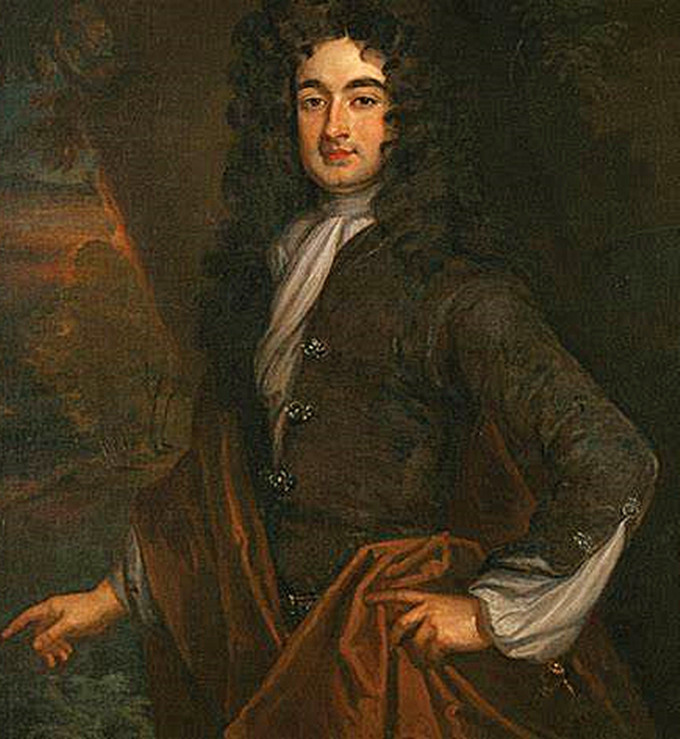 |
|
| |
威廉·拜尔德(William Byrd,)。 |
|
|
|
| |
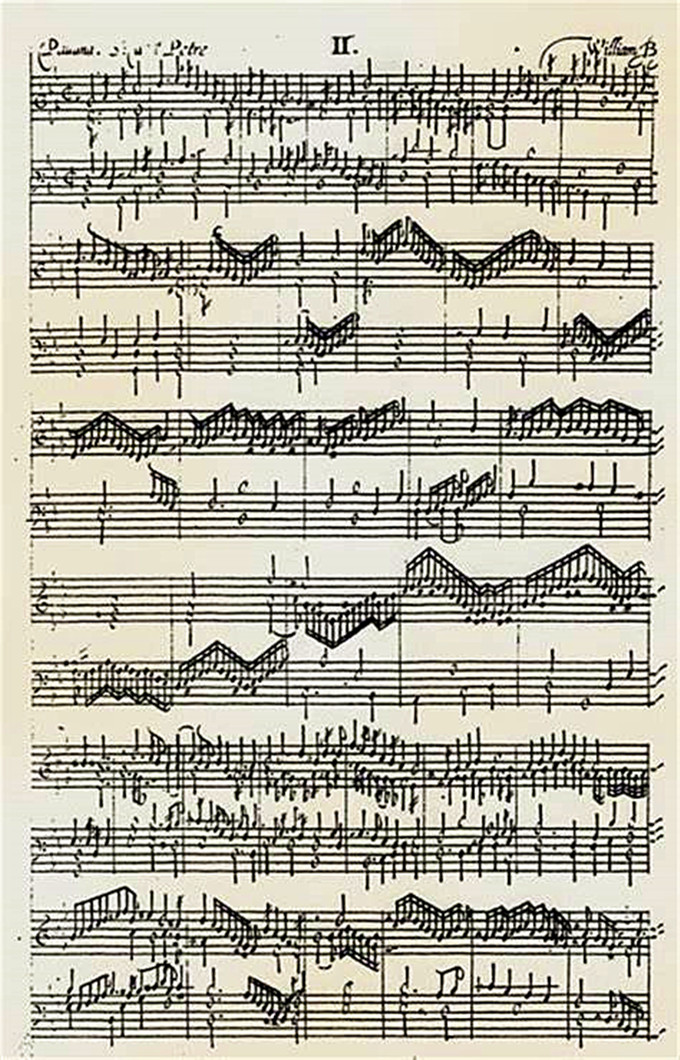 |
|
|
|
| |
威廉·拜尔德(William Byrd)的《伯德的帕特尼娅》乐谱的一页,1613年。 |
|
|
|
| |
A page from the
score of Byrd’s Parthenia, 1613 |
|
|
|
| |
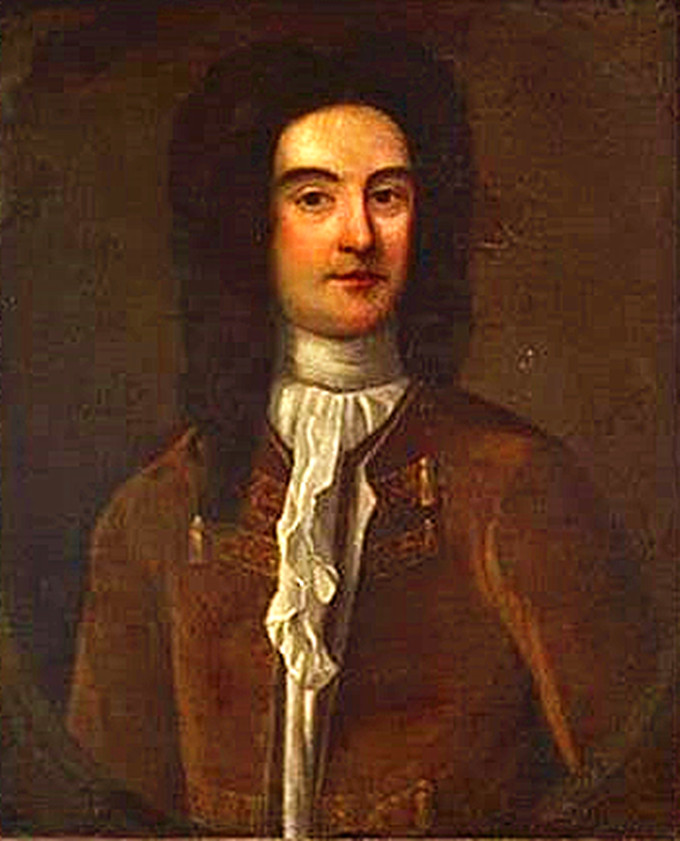 |
|
|
|
| |
威廉·拜尔德(William Byrd,) |
|
|
|
| |
|
|
|
|
| |
Today in the
history of music
April 3, 1607. "they say swans sing sweeter before they die.""Wrote
William baird in graduate alia.
William Byrd (1543-1623) was at the peak of the Renaissance, writing in
the widest range of genres among the musicians of his time.From the mass
of a cappella polyphonic choral, eclogue and eclogue to the English
songs (songs) accompanied by lute, as well as the purely instrumental
dance, lute, keyboard works for organ and harpsichord.
Shakespeare (1564-1616) lived during the heyday of English art in the
second half of the 16th century.At this time, British music also entered
the most brilliant era, presenting a colorful scene, religious music and
secular music Chambers to compete, and more deeply integrated with each
other.William baird was one of the most outstanding English composers of
this period. He was born in 1543 in lincolnshire, England.His first
official job was as an organist at Lincoln church, where he also wrote
music for services.He then moved to London in 1572 on the recommendation
of thales, where he served with him as music superintendent of the royal
church.Their successful partnership allowed them, three years later, to
obtain queen Victoria's permission to import and print music exclusively
in the UK for 21 years.This led to the publication of their first
musical collection, thirty-four chants to the queen.Despite his
commercial success, baird did not want to live in London for long.He
retained his Catholic faith in a harsh Anglican climate;He not only
composed music for his liturgy, but also paid homage to other
catholics.Although his "political allegiance" to the church of England
was never questioned, he was reluctant to get involved in too many
political disputes.So after six years he left London to live in the
country.
Between 1588 and 1589, baird's teacher and friend thales and his wife
died.Perhaps is feels the impermanence of the life!Over the next few
years he published several volumes of music, including eclogues,
keyboard compositions and Latin anthems, dedicated to secular royal
patrons and Catholic supporters of the spiritual pillar.The rise of
Catholicism in England after the accession of James I led to the
publication of a selection of mass and two volumes of hymns in the hope
of synthesizing a set of year-round, regular liturgical music.The
popularity of the music allowed baird to buy stonton in Essex in 1593,
move his family and live there for the rest of his life.In 1611 baird
published his last collection of works, and his last works, including
sacred and secular music, were published by a publisher a year after his
death.
Baird's works are full of emotional appeal, beautiful melody, exquisite
and meticulous structure, is a typical English style.The music of viol
and virgina created by baird is an early purely instrumental work with
important historical significance.Baird's greatest works are three
masses, which are three parts, four parts and five parts.The polyphonic
musical structure presented by these three massages was almost unique in
Europe at that time. Moreover, when composing the music, baird insisted
on selecting only the words he was interested in, so as to make the
music fully consistent with the content of the lyrics and thus enhance
the artistic conception of the work.At the same time, the feelings and
emotions expressed by the three masses are also diversified. For
example, the three-part mass exudes a peaceful and optimistic mood, some
passages of the four-part mass reveal an atmosphere of depression and
despair, and the five-part mass exudes an uplifting and arrogant
momentum.All this points to the fact that "personality" is developing
more and more in music.In addition, "the Eucharist" is one of baird's
most famous scripture songs. This gentle short song reflects the
brilliance of human nature, and also shows baird's talent for creating
melodies.Baird's most important works also include the liturgy and the
chords of fantasia and chants that pioneered the English instrumental
style.
Today's video: 1. The music Shakespeare heard: the kaman whistle by
William Byrd;2. Thales theme fantasia by Vaughan Williams. |
|
|
|
| |
|
|
|
|
| |
|
|
| |
威廉·拜尔德(William Byrd,) |
|
|
|
| |
拜尔德于1539年10月至1540年9月底出生于伦敦,是托马斯和马杰里·拜尔德的七个孩子之一(哈雷,拜尔德)。
到1572年,他被全职雇用为皇家教堂绅士,这是一群大约24名男性歌手和风琴师,负责为王室提供教堂音乐,她在女王从宫殿到宫殿的旅行中作为她的随行人员之一留在女王身边。
伯德是著名作曲家托马斯·泰利斯的化身,他与他共享皇室赞助,从1575年开始,他拥有一项21年的独家印刷音乐专利,并继续共同创作一本献给女王的神圣歌曲书。
在他活跃的一生中,拜尔德为各种乐器和声音创作了500多部作品,从简短的简单作品到非常复杂的大型作品。 |
|
|
|
| |
Byrd was born in
London sometime between October 1539 and the end of September 1540, one
of the seven children of Thomas and Margery Byrd (Harley, Byrd 4). By
1572, he was employed full time as a Gentleman of the Chapel Royal, the
group of about twenty-four male singers and organists charged with
providing church music for the royal household, who remained with the
Queen as part of her entourage as she travelled from palace to palace.
Byrd was a protégé of the noted composer Thomas Tallis, with whom he
shared royal patronage, beginning in 1575 with an exclusive 21-year
patent for printing music, and continuing with shared authorship of a
book of sacred songs dedicated to the Queen. Throughout his active life,
Byrd composed more than 500 works for diverse instruments and voices,
ranging from short simple pieces to large works of great complexity. |
|
|
|
| |
 |
|
|
|
| |
霍默斯·泰利斯(Homas
Tallis, 1505-1585) |
|
|
|
| |
|
|
|
|
| |
霍默斯·泰利斯(1505年,生于肯特?他于1585年11月20日或23日在伦敦格林尼治去世),是威廉·伯德之前英国最重要的宗教音乐作曲家之一。他的风格包括简单的宗教改革服务音乐和伟大的大陆复调学校,他的影响主要是引入到英国音乐。
关于泰利斯所受的教育,人们一无所知。1530-31年,他在多佛修道院担任管风琴手,1537年和1538年,他在伦敦的圣玛丽山,虽然不知道他以什么身份。1538年,他搬到了埃塞克斯的沃尔瑟姆修道院,他的名字出现在1540年因修道院解散而获得工资和报酬的人的名单上。离开沃尔瑟姆后,他似乎短暂地去了坎特伯雷大教堂,在那里他被列为歌手之一。1543年,他成为皇家礼拜堂的一员。在女王伊丽莎白一世的请愿书,会同伯德在1577年,他指的是“服务Majestie和罗亚尔祖先fortie这些年来,“但它认为,也许他有一些与法院在几年前被任命为皇家礼拜堂的一位绅士。他曾在亨利八世、爱德华六世、玛丽都铎和伊丽莎白一世手下任职。
1575年1月21日,伊丽莎白女王授予泰利斯和伯德在英国印刷乐谱和乐谱纸的垄断权;这是第一次为这一目的颁发专利证书。他们授权出版的第一本出版物是34本莫特诗集,其中17本是泰利斯的,17本是伯德的(也许指的是伊丽莎白统治至今的17年),名为《圣歌集》,1575年由沃特罗利埃印刷。那些拉丁乐曲,再加上新教印刷商约翰·戴在他的某些笔记中印刷的五首英文歌词……(1565年发行,尽管1560年部分印刷),构成了泰利斯在世时看到印刷的全部音乐。
泰利斯的拉丁文著作包括一篇不大的、不知名的四部分弥撒;一种由五部分组成的圣体,一种药膏,取自他的同名的反方;部分的质量;还有两个《金碧辉煌》的布景。他还对耶利米的哀歌做了两个背景,第一个是他最著名的作品之一。在他的拉丁作品中,有两首经常被引用来作为塔里斯对对位艺术至高的掌握的证明:七部分的《占卜的悲惨》,这是一种非凡的canonic写作的壮举,包括倒退的运动和几个程度的增加;和著名的由40个部分组成的经文歌,被认为是英国音乐中一个独特的纪念碑。 |
|
|
|
| |
|
|
| |
Homas
Tallis, (born c. 1505, Kent?—died November 20 or 23, 1585,
Greenwich, London), one of the most important English composers
of sacred music before William Byrd. His style encompassed the
simple Reformation service music and the great Continental
polyphonic schools whose influence he was largely responsible
for introducing into English music.
Nothing is known of Tallis’s education. In 1530–31 he held a
post as an organist at Dover Priory, and in 1537 and part of
1538 he was at St. Mary-at-Hill, London, though it is not known
in what capacity. He moved to Waltham Abbey, Essex, in 1538, and
his name appears in a list of persons who in 1540 received wages
and rewards for services at the dissolution of the abbey. From
Waltham he appears to have gone briefly to Canterbury Cathedral,
where he is listed among the singers. In 1543 he became a member
of the Chapel Royal. In a petition to Queen Elizabeth I, made
jointly with Byrd in 1577, he refers to having “served your
Majestie and your Royall ancestors these fortie years,” but it
is thought that perhaps he had some association with the court
in the years before his appointment as a gentleman of the Chapel
Royal. In that capacity he served under Henry VIII, Edward VI,
Mary Tudor, and Elizabeth I.
On January 21, 1575, Queen Elizabeth granted Tallis and Byrd the
monopoly for printing music and music paper in England; that was
the first instance of letters patent issued for that purpose.
The first publication under their license was a collection of 34
motets, 17 by Tallis and 17 by Byrd (perhaps referring to the 17
years of Elizabeth’s reign to date), entitled Cantiones sacrae,
printed by T. Vautrollier in 1575. Those Latin pieces, together
with five anthems to English texts printed by Protestant printer
John Day in his Certaine Notes… (issued 1565, though partially
printed in 1560), comprised all of his music that Tallis saw in
print during his lifetime.
Tallis’s Latin works include a modest, unnamed four-part mass; a
five-part mass, Salve intemerata, derived from his antiphon of
the same name; a seven-part mass; and two settings of the
Magnificat. He also made two settings of the Lamentations of
Jeremiah, the first of which is among his most-celebrated works.
Among his Latin pieces two in particular are often cited as
demonstrations of Tallis’s supreme mastery of the art of
counterpoint: the seven-part Miserere nostri, an extraordinary
feat of canonic writing, involving retrograde movement together
with several degrees of augmentation; and the famous 40-part
Spem in alium, considered a unique monument in English music. |
|
|
|
| |
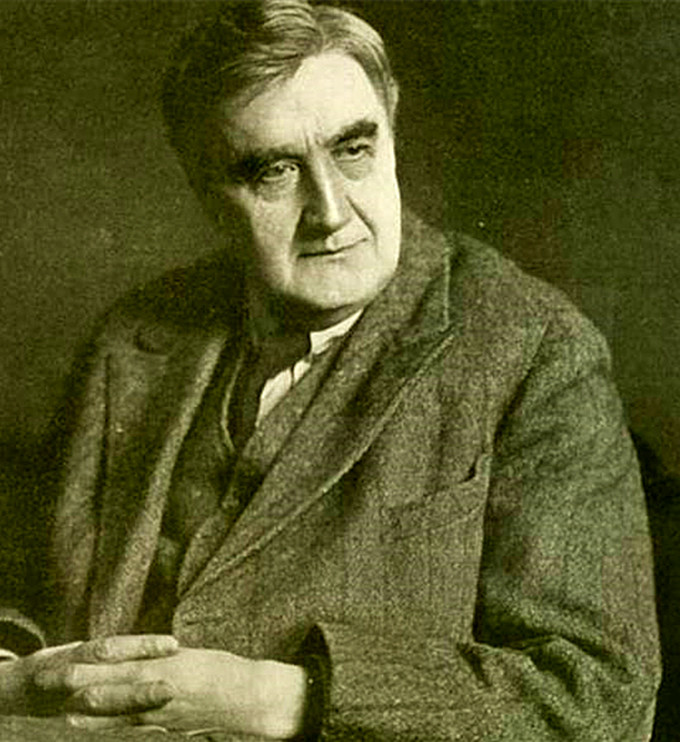 |
|
| |
沃恩·威廉斯 (Ralph Vaughan Williams,
1872-1958) |
|
|
|
| |
|
|
|
|
| |
沃恩·威廉斯 泰利斯主题幻想曲 Fantasia on a
theme by Thomas Tallis
|
|
沃恩·威廉斯
(Ralph Vaughan Williams,
1872-1958),著名20世纪英国作曲家,电影作曲家。他所涉及的音乐体裁广泛,为交响曲,室内乐,歌剧,合唱,康塔塔,协奏曲,电影配乐等均写下了优秀的作品。他格外重视英国民间音乐,经常收藏和编辑英国民歌。通过对民间音乐的热爱与研究,沃恩.威廉斯的音乐充满了独特的英国风情,被认为是最具有英国本土风格的作曲家。他的一生经历过两次战争,并曾被授予骑士头衔。《泰利斯主题幻想曲》是1910年创作的交响乐队作品。 |
|
Ralph Vaughan Williams (1872-1958) was a
British composer and film composer of the
20th century.He covers a wide range of
musical genres, including symphony, chamber
music, opera, chorus, cantata, concerto and
film score.He attached great importance to
English folk music and often collected and
edited English folk songs.Through his love
and study of folk music, Vaughan Williams'
music is full of unique English style and is
considered as the most native English
composer.He lived through two wars and was
knighted.Thales theme fantasia is a symphony
orchestra fantasia composed in 1910. |
|
|
|
|
| |
|
|
|
|
| |
未得原作者编者授权严禁转载www.mt77.com任何内容 |
|
|
|
|
|
|
|
|
|
|
|
|
|
|
.png)

